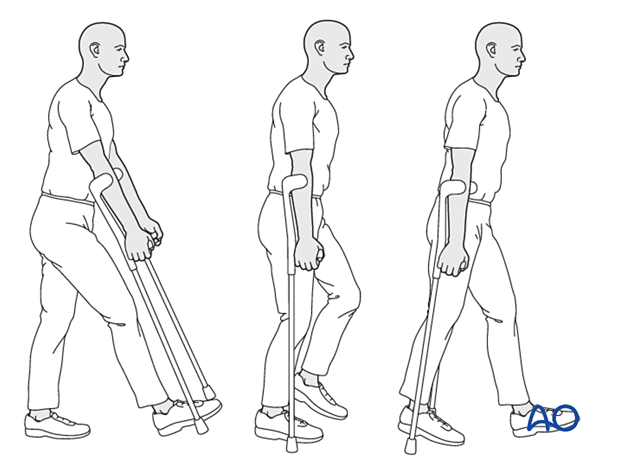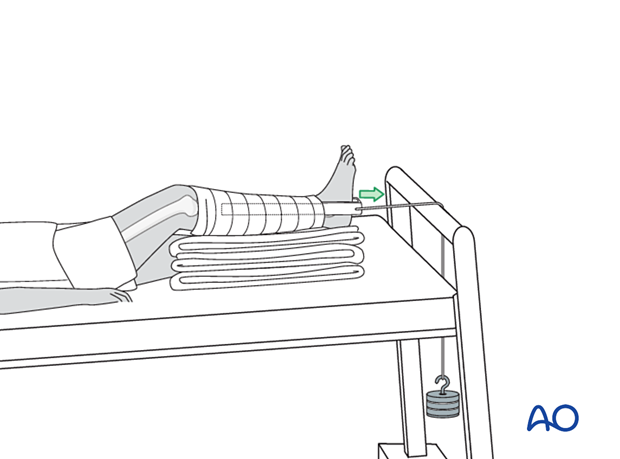Observation
1. General considerations
Treatment guidelines
Depression of the femoral head with a chondral lesion or impaction fracture will be treated by observation.
Close follow-up is mandatory to identify posttraumatic arthritis or avascular necrosis.
In case of secondary osteoarthritis that involves the weight-bearing area, arthroplasty should be considered.

2. Skin traction
Skin traction on the leg for a few days may be used for pain relief.
Use about 2 kg of weight over the end of the bed for traction.

3. Mobilization
Dislocation precautions
Since most femoral head fractures are associated with a hip dislocation, precautions against redislocation should be taken for the first 6 weeks after injury.
Low seats and toilets, flexing the hip when arising, sitting with legs crossed, as well as squatting and kneeling may also be avoided initially, as should pivoting on the affected leg. The patient and caregivers may be encouraged to use additional support when rising from a sitting position.
Patient mobilization
Weight bearing as tolerated is allowed with walking aids.
Range-of-motion exercises should start cautiously in the immediate postoperative period to prevent stiffness while avoiding dislocation.

Pain control
To facilitate rehabilitation and prevent delirium, it is important to control the postoperative pain properly, eg, with a specific nerve block.
VTE prophylaxis
Patients with lower extremity fractures requiring treatment require deep vein prophylaxis.
The type and duration depend on VTE risk stratification.
Follow-up
Follow-up assessment for wound healing, neurologic status, function, and patient education should occur within 10–14 days.
Check the condition of the injury with appropriate x-rays at six weeks.
Longer follow-up, at 6 months and 1 year, is indicated to assess the development of posttraumatic arthritis and/or avascular necrosis.
Prognosis of proximal femoral fractures in elderly patients
For prognosis in elderly patients, see the corresponding additional material.













